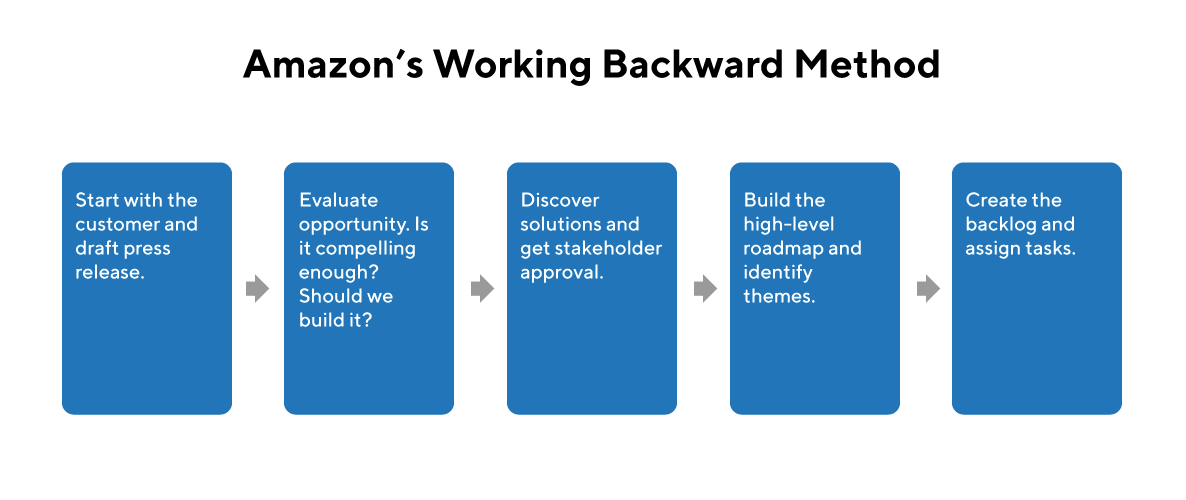⏮ Backward Design Model: A User-Centred Design Approach that Starts the Design Process with the Users and Work Backward.
Backward design, also known as reverse engineering, is an approach that is commonly used in instructional design to design learning programs. However, when I came across the Amazon’s Working Backward Method, this approach appears rather similar to the UX design approach. In this blog, we will look at how the backward design model aligns with the UX design process.
The Amazon working backward method is a product development approach that starts with the team imagining the product is ready to ship. The product team’s first step is to draft a press release announcing the product’s availability. The audience for this press release is the product’s customer.
The backward design approach in UX design can start with the end goal in mind and then design the product that leads to achieving that goal. This approach is particularly useful when designing products that need to solve a specific problem or meet a particular user need. The process involves three stages: identifying the user's goals, designing the user experience, and then designing the product.
Identify the User's Goals: The first step in backward design is to identify the user's goals. This involves understanding the user's needs, wants, and motivations. It is important to understand the problem that the user is trying to solve and what they hope to achieve by using the product. This step helps to ensure that the product is designed to meet the user's needs and goals.
Design the User Experience: The next step is to design the user experience. This involves creating a user journey map that outlines the user's interactions with the product. It is important to consider the user's needs and goals at each stage of the journey, from the initial discovery of the product to the final action or outcome. The user experience should be designed to be intuitive, easy to use, and enjoyable for the user.
Design the Product: The final step in backward design is to design the product. This involves creating the actual product that meets the user's needs and goals. The product should be designed to support the user's journey and provide a seamless user experience. It is important to consider the user's feedback and iterate on the design to ensure that the product meets their needs and expectations.
Using the backward design approach in UX design can help ensure that the product is designed to meet the user's needs and goals. By starting with the end goal in mind, UX designers can create products that are more effective, user-friendly, and enjoyable for the user. This approach can also help to save time and resources by focusing on the most important aspects of the product and avoiding unnecessary features or functions.
“You’ve got to start with the customer experience and work backward to the technology. You can’t start with the technology then try to figure out where to sell it.”


